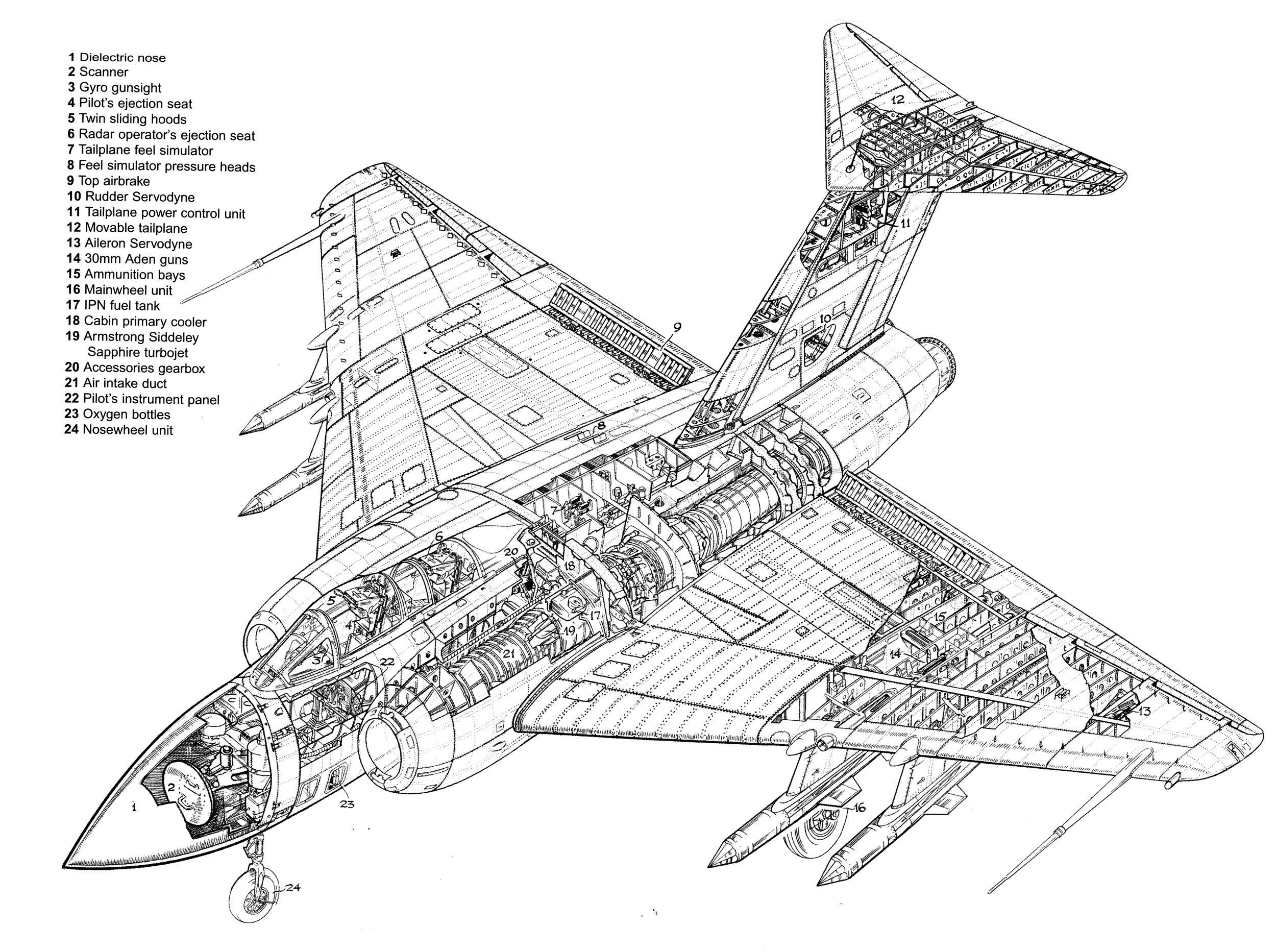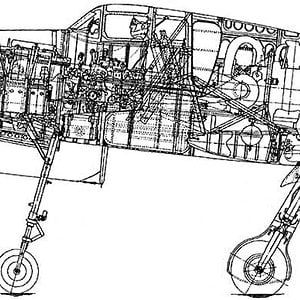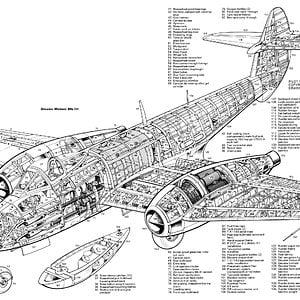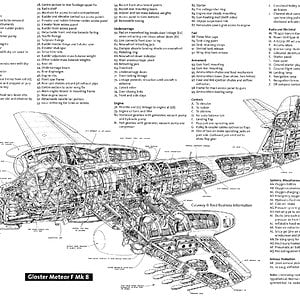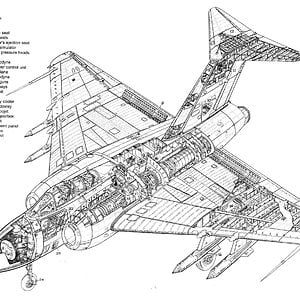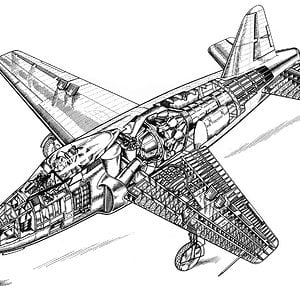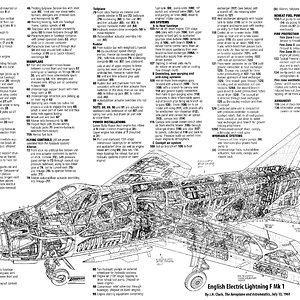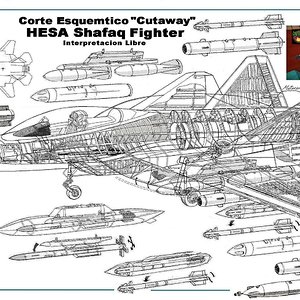Navigation
Install the app
How to install the app on iOS
Follow along with the video below to see how to install our site as a web app on your home screen.
Note: This feature may not be available in some browsers.
More options
You are using an out of date browser. It may not display this or other websites correctly.
You should upgrade or use an alternative browser.
You should upgrade or use an alternative browser.
Design and development
The Javelin began with a 1947 Air Ministry requirement for a high-performance night fighter that led to orders for prototypes under specification F.44/46 of two of the competing designs, the Gloster GA.5 and the de Havilland DH.110 which was also under consideration for the Royal Navy. When it appeared that the Gloster design would be ready sooner and would be simpler and cheaper to build, the de Havilland submission was rejected; though the company was to continue development of the DH.110 as a private venture that eventually resulted in the naval Sea Vixen. The Gloster design had a distinctive appearance, its broad delta wings surmounted by a large-finned T-tail. The F.44/46 specification subsequently became F.4/48 related to the "Operational Requirement" OR.227.
Gloster Javelin, probably a flight test aircraft, at Farnborough.
The GA.5 first flew on 26 November 1951 flown by test pilot Bill Waterton[1] (two months after the prototype DH 110 took to the air), with protracted flight testing taking place until 1956, when the first 14 production machines were delivered, designated F(AW) Mk 1. On one test flight, the elevator surfaces detached. Rather than abandon the aircraft, Bill Waterton landed it despite the lack of control surfaces. He was awarded the George Medal for his action in retrieving flight data from the burning aircraft.[2] The second prototype (WD808) received a modified wing in 1953. After initial testing by Waterton, it was passed to another Gloster test pilot Peter Lawrence[N 1] for his opinion. On 11 June 1953, the aircraft crashed. Lawrence had ejected, but too late (at about 400 ft (120 m)), and was killed. The Javelin had experienced a "deep stall", the wing acting like an airbrake had killed forward motion and at the same time stopped airflow over the elevators, leaving them useless. Without elevator control, Lawrence would not have been able to regain control and the aircraft dropped from the sky.[3] The third prototype (WT827), and the first to be fitted with radar flew on 7 March 1953. The fourth WT827 was passed to the Aeroplane and Armament Experimental Establishment (A&AEE) for trials and the fifth prototype, WT836, made its first flight in July 1954.
On 14 October 1954, a pilot attached to Gloster from RAE Farnborough was killed in a Mk I Javelin XA546 after entering a spin. On 8 December 1955, a service test pilot S/L Dick[4] was testing XA561 for the A&AEE. During manoeuvres, it entered a flat spin which the anti-spin parachute could not stop, and he ejected. Following this, a stall-warning device was developed for the Javelin.
During the course of testing development and improvements continued, leading to small production runs of different models of the aircraft throughout the years.
By the end of 1956, the Javelin was up to a FAW 7 variant, which was the first to actually meet the specifications of the original Air Ministry requirement, and which was to become the definitive version of the aircraft (most of which were later altered to the FAW 9 standard). Indeed, the Javelin was evolving so quickly that deliveries of the FAW 8 began before FAW 7 production had ended. As a result, the final 80 FAW 7 aircraft went straight from the factory into storage, eventually flying after being re-manufactured as FAW 9s. A total of 427 Javelins were produced in all variants, plus seven prototypes.
The Javelin began with a 1947 Air Ministry requirement for a high-performance night fighter that led to orders for prototypes under specification F.44/46 of two of the competing designs, the Gloster GA.5 and the de Havilland DH.110 which was also under consideration for the Royal Navy. When it appeared that the Gloster design would be ready sooner and would be simpler and cheaper to build, the de Havilland submission was rejected; though the company was to continue development of the DH.110 as a private venture that eventually resulted in the naval Sea Vixen. The Gloster design had a distinctive appearance, its broad delta wings surmounted by a large-finned T-tail. The F.44/46 specification subsequently became F.4/48 related to the "Operational Requirement" OR.227.
Gloster Javelin, probably a flight test aircraft, at Farnborough.
The GA.5 first flew on 26 November 1951 flown by test pilot Bill Waterton[1] (two months after the prototype DH 110 took to the air), with protracted flight testing taking place until 1956, when the first 14 production machines were delivered, designated F(AW) Mk 1. On one test flight, the elevator surfaces detached. Rather than abandon the aircraft, Bill Waterton landed it despite the lack of control surfaces. He was awarded the George Medal for his action in retrieving flight data from the burning aircraft.[2] The second prototype (WD808) received a modified wing in 1953. After initial testing by Waterton, it was passed to another Gloster test pilot Peter Lawrence[N 1] for his opinion. On 11 June 1953, the aircraft crashed. Lawrence had ejected, but too late (at about 400 ft (120 m)), and was killed. The Javelin had experienced a "deep stall", the wing acting like an airbrake had killed forward motion and at the same time stopped airflow over the elevators, leaving them useless. Without elevator control, Lawrence would not have been able to regain control and the aircraft dropped from the sky.[3] The third prototype (WT827), and the first to be fitted with radar flew on 7 March 1953. The fourth WT827 was passed to the Aeroplane and Armament Experimental Establishment (A&AEE) for trials and the fifth prototype, WT836, made its first flight in July 1954.
On 14 October 1954, a pilot attached to Gloster from RAE Farnborough was killed in a Mk I Javelin XA546 after entering a spin. On 8 December 1955, a service test pilot S/L Dick[4] was testing XA561 for the A&AEE. During manoeuvres, it entered a flat spin which the anti-spin parachute could not stop, and he ejected. Following this, a stall-warning device was developed for the Javelin.
During the course of testing development and improvements continued, leading to small production runs of different models of the aircraft throughout the years.
By the end of 1956, the Javelin was up to a FAW 7 variant, which was the first to actually meet the specifications of the original Air Ministry requirement, and which was to become the definitive version of the aircraft (most of which were later altered to the FAW 9 standard). Indeed, the Javelin was evolving so quickly that deliveries of the FAW 8 began before FAW 7 production had ended. As a result, the final 80 FAW 7 aircraft went straight from the factory into storage, eventually flying after being re-manufactured as FAW 9s. A total of 427 Javelins were produced in all variants, plus seven prototypes.

